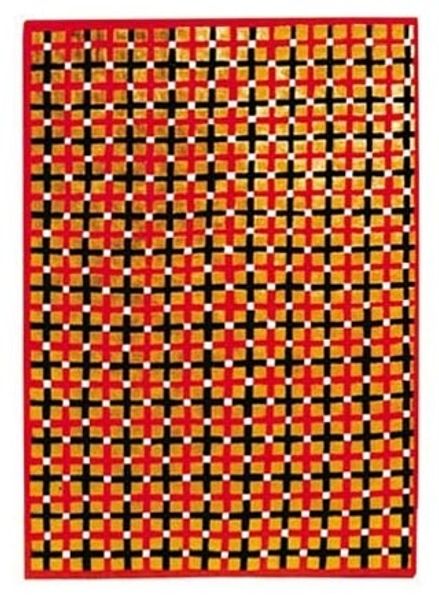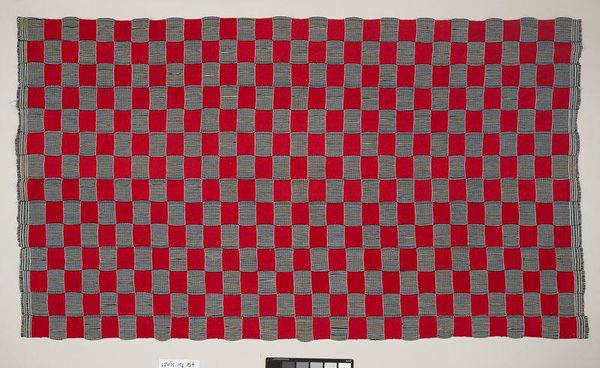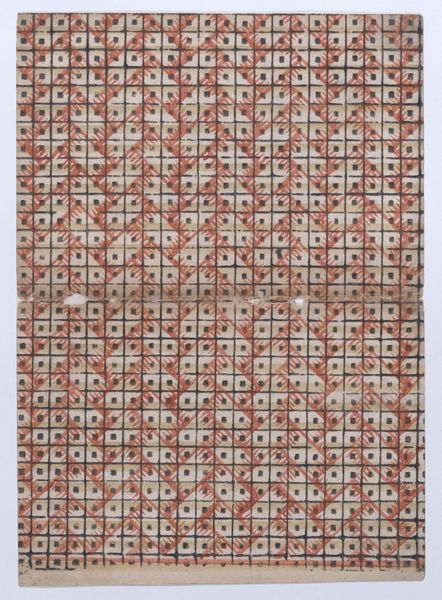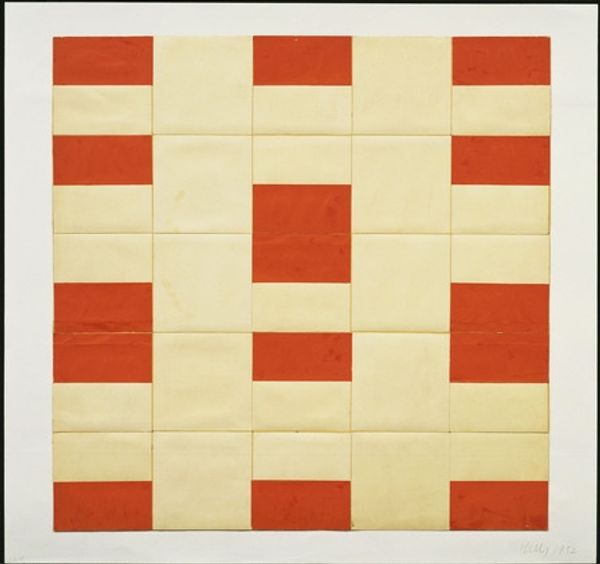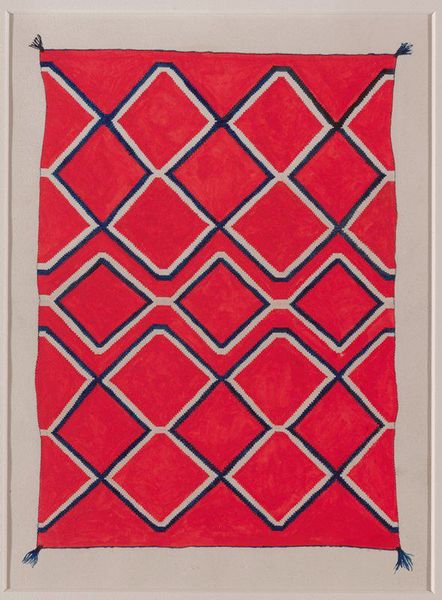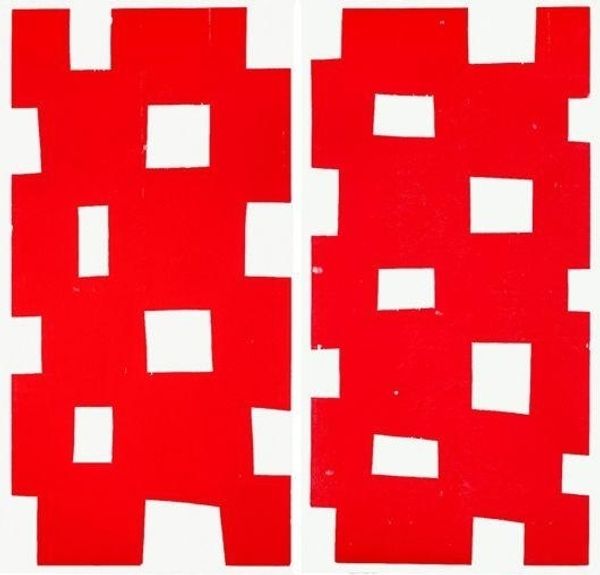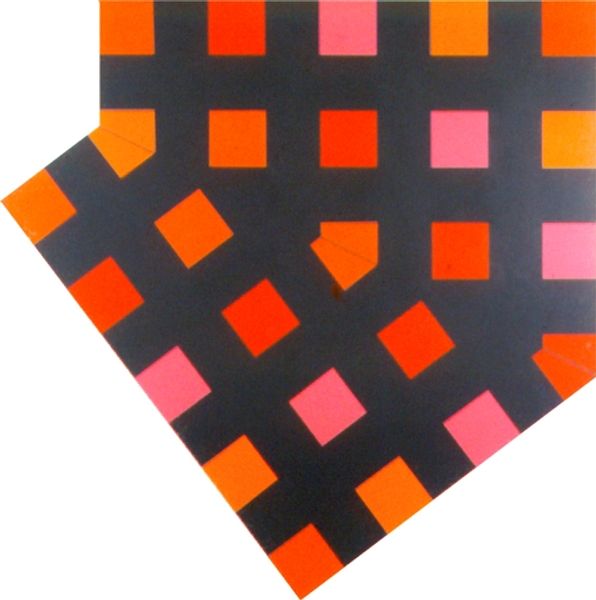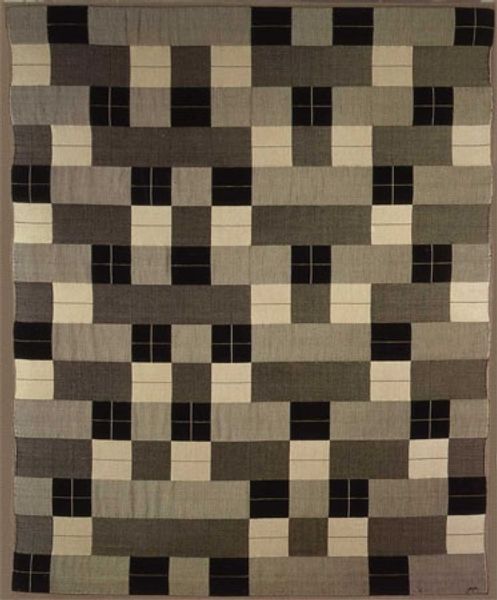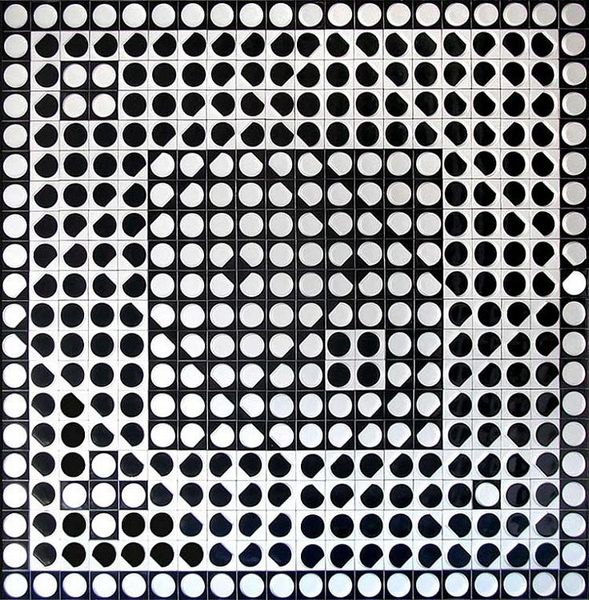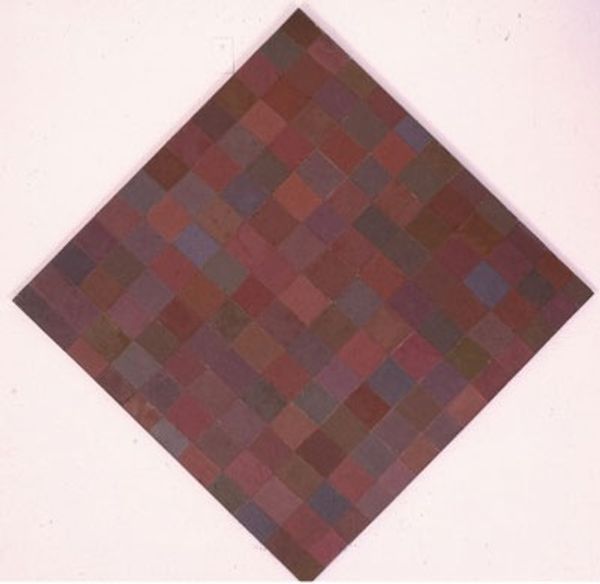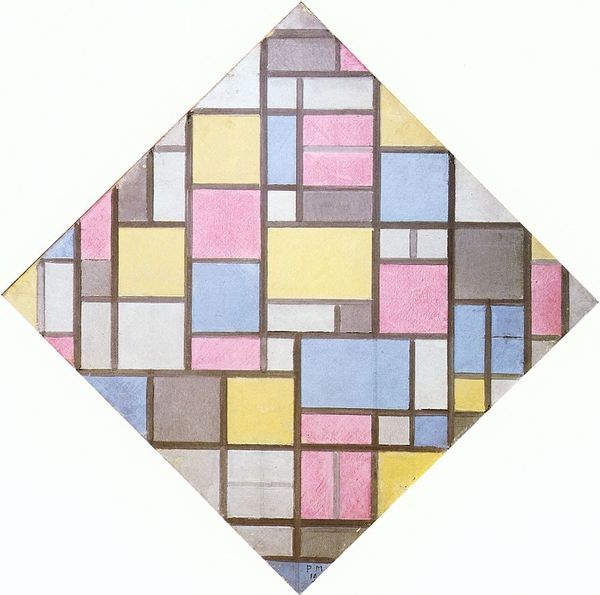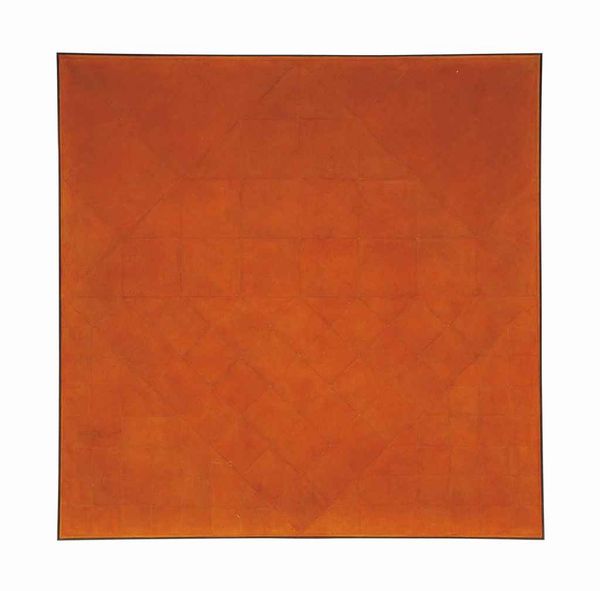
acrylic-paint
#
minimalism
#
postmodernism
#
pattern
#
acrylic-paint
#
geometric pattern
#
abstract pattern
#
rectangle
#
minimal pattern
#
geometric
#
square
#
repetition of pattern
#
vertical pattern
#
abstraction
#
pattern repetition
#
hard-edge-painting
Copyright: Sherrie Levine,Fair Use
Editor: So here we have Sherrie Levine's "Check #12," from 1985, an acrylic on wood piece. It's striking how such a simple arrangement of red and grey rectangles creates a very powerful sense of order. What stands out to you? Curator: Its compositional rigor is paramount. Notice how Levine uses the grid, a structure often associated with modernist painting, to organize the work. The juxtaposition of the vibrant red against the muted grey creates a visual rhythm. How does the flatness of the acrylic contribute to your understanding? Editor: I think that lack of texture really reinforces the idea of the piece as a system, almost like a digital display. But it also feels handmade somehow, those slight imperfections in the paint application. Is that intentional, do you think? Curator: The "handmade" element introduces a critical layer. Levine’s project frequently interrogates notions of originality and authorship. By employing a seemingly mechanical structure with slight deviations, she prompts viewers to consider the difference between reproduction and originality. Consider the semiotics of colour. What feelings or ideas does the stark contrast evoke for you? Editor: It’s like a visual push and pull. The colours are very distinct. Thinking about what you've said about originality and mechanical systems, does the title "Check #12" mean something in relation to that? Curator: Precisely! The numbering implies a series, further distancing the work from the aura of a unique, inspired creation. The title becomes part of the artwork's structure and message. It almost self-deconstructs through its simple arrangement of red and grey. A painting which, rather than being created, has been, in a way, manufactured. Editor: That makes a lot of sense. I’m definitely seeing it differently now, thanks. Curator: My pleasure. I will certainly remember to analyze colour semiotics more attentively in the future.
Comments
No comments
Be the first to comment and join the conversation on the ultimate creative platform.
